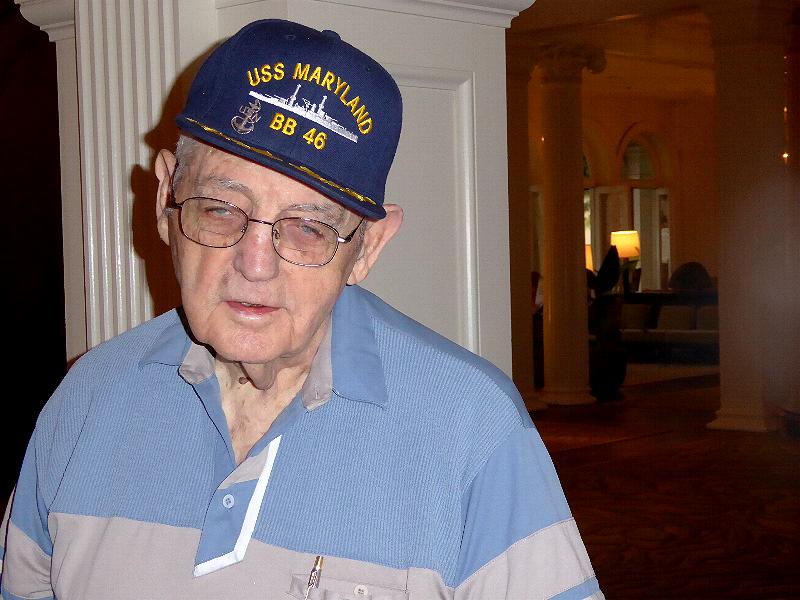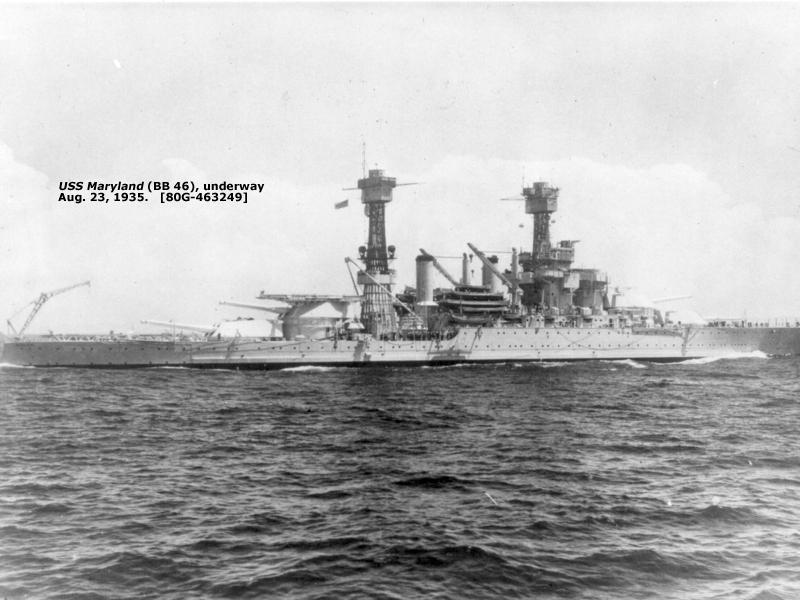

|
|
USS Maryland (BB-46), also known as "Old Mary" or "Fighting Mary" to her crew-mates
Maryland (BB-46) was laid down 24 April 1917 by Newport News Shipbuilding Co., Newport News, VA.
With a new type seaplane catapult and the first 16-inch guns mounted on a U.S. ship, Maryland was the pride of the
She made a goodwill voyage to Australia and New Zealand in 1925, and transported President-elect Herbert Hoover
A gunner's mate striker, writing a letter near his machine gun, brought the first of his ship's guns into play, shooting
She emerged 26 February 1942 not only repaired but modernized and ready for great service. During the important Maryland received seven battle stars for World War II service.
Name unknown. USS Maryland (BB 46)
Launched 20 March 1920; sponsored by Mrs. E. Brook Lee, wife of the Comptroller of the State of Maryland.
Commissioned 21 July 1921, Capt. C. F. Preston in command.
Navy. Following an east coast shakedown she found herself in great demand for special occasions. She appeared at
Annapolis for the 1922 Naval Academy graduation and at Boston for the anniversary of Bunker Hill and the Fourth
of July. Between 18 August and 23 September she paid her first visit to a foreign port, transporting Secretary of State
Charles Evans Hughes to Rio de Janeiro for Brazil's Centennial Exposition. The next year. after fleet exercises off the
Panama Canal Zone. Maryland transited the canal in the latter part of June to join the battle fleet stationed on the
west coast.
on the Pacific leg of his tour of Latin America in 1928. Throughout these years and the 1930s she served as a mainstay
of fleet readiness through tireless training operations. In 1940 Maryland and the other battleships of the battle force
changed their bases of operations to Pearl Harbor.
She was present at battleship row along Ford Island when Japan struck 7 December 1941.
down one of two attacking torpedo planes. Inboard of USS Oklahoma (BB 37) and thus protected from the initial
torpedo attack, Maryland managed to bring all her antiaircraft batteries into action. Despite two bomb hits she continued
to fire and, after the attack, sent firefighting parties to assist her sister ships. The Japanese announced that she had been
sunk, but 30 December, battered yet sturdy, she entered the repair yard at Puget Sound Navy Yard.
Battle of Midway, the old battleships, not fast enough to accompany the carriers, operated as a backup force.
Thereafter Maryland engaged in almost constant training exercises until 1 August, when she returned to Pearl Harbor.

USS Maryland (BB 46)